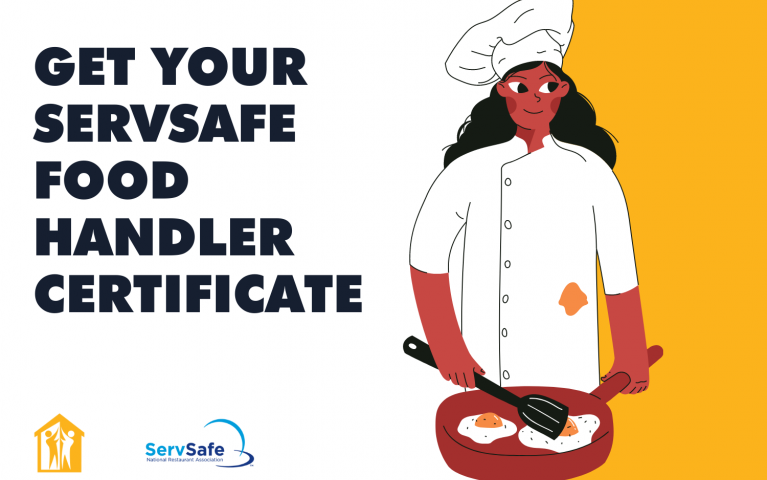Navigating the Needs for the ServSafe Alcohol Certification: What to Anticipate
Navigating the Needs for the ServSafe Alcohol Certification: What to Anticipate
Blog Article
Comprehensive Food Handlers Educating for Health and Safety
In today's swiftly advancing food solution landscape, comprehensive food trainers training has emerged as an important element for ensuring health and security. By instilling essential practices connected to hand health, food storage, and cleanliness, this training not just alleviates the risk of foodborne diseases but also enhances compliance with regulative criteria.
Value of Food Security Training

Furthermore, food safety and security training aids to make sure that workers are mindful of current laws and guidelines, which are vital for maintaining functional licenses and staying clear of expensive charges. Regular training sessions additionally act as a platform for strengthening ideal techniques, thereby decreasing the chance of human mistake, which frequently acts as a leading root cause of food contamination.
In addition, buying food security training can boost a facility's track record, as clients significantly prioritize eating experiences that show high safety criteria. Such aggressive steps not just shield customers but additionally contribute to the long-lasting success of food companies. In summary, extensive food safety and security training is an indispensable component of food service operations, directly impacting both public wellness and service sustainability.
Key Concepts of Health
Maintaining high criteria of health is essential in any type of food managing environment to stop contamination and make sure the security of customers. The crucial principles of health encompass several vital techniques that food trainers have to regularly use.
First, hand hygiene is paramount; food handlers must wash their hands completely with soap and water before and after handling food, along with after utilizing the bathroom or touching any possibly polluted surfaces. Tools and surfaces have to be frequently cleansed and sanitized to get rid of microorganisms. This includes tools, cutting boards, and counter tops, which need to be preserved in a clean problem.


Proper food storage space is also crucial; raw foods need to be kept independently from cooked or ready-to-eat things to stay clear of cross-contamination. servsafe alcohol. Furthermore, preserving appropriate temperature level controls is important; disposable products must be kept at safe temperature levels to hinder bacterial development
Lastly, individual health can not be ignored. Food trainers should use tidy clothing, usage hair restraints, and avoid functioning when ill. By adhering to these key concepts of hygiene, food trainers can considerably reduce the danger of foodborne diseases and promote a more secure dining experience for all consumers.
Common Foodborne Health Problems
Although several foodborne illnesses can be protected against through correct hygiene and secure food managing techniques, they remain a substantial public health and wellness problem. Foodborne pathogens can bring about a selection of diseases, varying from light gastrointestinal distress to severe issues and also death.
Common foodborne ailments consist of salmonellosis, brought on by Salmonella microorganisms, frequently connected to undercooked fowl and eggs. An additional widespread illness is listeriosis, related to raw milk products and ready-to-eat meats, which can be especially unsafe for expectant ladies and immunocompromised people. Norovirus, often gotten from polluted food or surface areas, is recognized for its quick spread and ability to create episodes in common setups.
Escherichia coli (E. coli) infection, especially connected with undercooked hamburger and polluted produce, can cause serious stomach aches and kidney failing in some instances. In addition, Clostridium perfringens, typically discovered in large amounts of food that are his explanation incorrectly saved, can cause gastrointestinal disorder with symptoms appearing shortly after consumption.
Recognizing these diseases is essential for food handlers, as awareness can substantially decrease the danger of contamination and shield public wellness. Appropriate education and training are crucial components in combating foodborne conditions.
Finest Practices for Food Handling
Reliable food dealing with practices are essential in protecting against the spread of foodborne health problems. Appropriate hand hygiene is necessary; food trainers need to wash their hands completely with soap and water before and after managing food, specifically raw meat or fowl. This straightforward activity substantially minimizes the threat of cross-contamination
Secondly, preserving suitable food storage temperature levels is critical. Subject to spoiling things should be kept at or below 40 ° F(4 ° C) to hinder microbial growth. Additionally, prepared foods should be maintained above 140 ° F(60 ° C) till offered.
Thirdly, making sure sanitation of surfaces and equipment is essential. Routinely sanitize kitchen counters, cutting boards, and utensils, particularly after preparing raw foods. Usage different cutting boards for raw and ready-to-eat foods read this to better lessen contamination dangers.
Furthermore, when preparing food, it is necessary to comply with the principle of "very first in, first out" (FIFO) to take care of supply properly and lower putridity. Last but not least, constantly stick and read to foodstuff tags for secure cooking temperature levels and handling guidelines. By carrying out these best practices, food trainers can considerably enhance food safety and safeguard public wellness.
Applying a Safety Society
Producing a safety and security culture within a food managing setting is crucial for fostering a dedication to food safety amongst all personnel. This society emphasizes the importance of food safety and security as a shared obligation, encouraging staff members to prioritize hygiene methods continually.
To implement a safety and security culture, organizations need to start by providing extensive training that addresses food handling methods, potential hazards, and the value of personal hygiene. Training sessions should be interactive and customized to the certain functions of employee, guaranteeing significance and engagement.
Additionally, management plays a crucial duty in establishing this society. Administration must model secure techniques and connect the value of food safety frequently. Acknowledging and awarding staff members that support security requirements can additionally reinforce these behaviors.
In addition, open communication networks need to be developed, allowing team to report safety problems without worry of effect. Regular safety and security audits and responses sessions can aid identify locations for renovation and reinforce responsibility.
Eventually, cultivating a safety and security society not only boosts compliance with food safety and security policies but also protects public health and wellness, fosters staff member morale, and adds to the overall success of the food managing establishment.
Conclusion
To conclude, extensive food trainers training plays a critical role in advertising health and safety within food service facilities. By furnishing employees with essential expertise about food safety principles, usual foodborne ailments, and ideal techniques for dealing with food, such training dramatically decreases wellness threats. Furthermore, cultivating a society of safety and security boosts the facility's online reputation and aligns with view publisher site customer assumptions for high safety and security standards, eventually adding to public health and wellness defense and the total success of the food solution sector.
In today's swiftly advancing food solution landscape, comprehensive food trainers training has emerged as a critical part for making sure health and safety.Food security training is essential for preserving high criteria in food handling and prep work, with research studies suggesting that appropriate training can lower foodborne ailments by up to 30%. In recap, thorough food safety and security training is a vital component of food service procedures, straight affecting both public health and organization sustainability.

Report this page